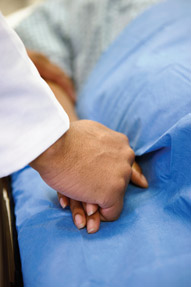ICD-10 advice, and clarifying transitional care management
The reset compliance date of Oct. 1, 2014, means that internists must move forward with transition and education plans for using the new ICD-10 codes. Start by examining documentation needed to assign the new codes.
Do not delay your plans to transition to ICD-10, even though the compliance date set by the Centers for Medicare and Medicaid Services is Oct. 1, 2014. ACP has not had any indication that the changeover to the new diagnosis code set will be delayed again, or canceled. With that in mind, all practices should be moving forward with their transition and education plans.
By this deadline, medical practices and the clearinghouses, payers, and billing companies that they work with will need to use ICD-10 codes. One way to begin preparing for ICD-10 is to begin looking closely at how clinical services are documented. This will help the physician and the coding staff to become more accustomed to the specific, detailed clinical documentation needed to assign ICD-10 codes.

Start by examining documentation for the most frequently used codes in the practice, and work with coding staff to determine if the documentation would be specific and detailed enough to select the best ICD-10 codes.
For example, laterality is expanded in ICD-10-CM. As a result, clinical documentation should include a statement of which side of the body is affected (i.e., right, left or bilateral).
Here are two examples of the specific information you will need to accurately code the following common diagnoses.
For diabetes mellitus, the following information will be needed: type of diabetes (i.e., due to underlying condition, chemical- or drug-induced, type 1, type 2); body system affected; complication or manifestation; and, for type 2 diabetes, whether there is long-term insulin use.
For injuries, the following information will be needed:
- External cause. Provide the cause of the injury; when meeting with patients, ask and document “how” the injury happened.
- Place of occurrence. Document where the patient was when the injury occurred; for example, include if the patient was at home, at work, in the car, etc.;
- Activity code. Describe what the patient was doing at the time of the injury; for example, was he or she playing a sport or using a tool?
- External cause status. Indicate if the injury was related to military, work or other.
Remember, ICD-10 will not affect the way you provide patient care. But it will be necessary to make your documentation as detailed as possible, since ICD-10 contains more specific choices for diagnosis coding. This information is likely already being shared by the patient during your visit; you'll now need to be sure to record it in the documentation so that your coding staff can see it. Solid documentation will also help reduce the need to follow up on submitted claims that might get bogged down for lack of a specific diagnosis—saving you time and money.
Additional resources to help you prepare are available at the CMS ICD-10 website.
Transitional care management services
ACP's Health Policy and Regulatory Affairs department has received many questions about the new transitional care management (TCM) CPT codes since they became effective in January 2013. What follows are a few of the questions and the staff's responses.
Q: For the TCM codes CPT 99495 and 99496, how long does the physician have until he/she sees the patient after the facility discharge? I've been told that the code used and allowable time permitted to see the patient after discharge vary based on whether moderate or complex medical decision-making is involved. Is this based on the hospitalization (which might be difficult for the outpatient primary care physician to determine) or on the complexity at the subsequent office visit? If it were the latter (which could not be known until the visit), it would seem that if the patient comes in after 7 days and if the decision making is found to be complex, it will be too late to charge for 99496. Can we charge for another evaluation and management (or any other CPT) code at the follow-up visit?
A: According to the CPT code descriptors, the patient should be seen by the physician within 7 or 14 days after discharge. The choice of codes is determined by the date of the first face-to-face visit after hospital/facility discharge and the level of medical decision making at that first visit. If there is a subsequent face-to-face visit within the same service period (30 days), that visit may be billed separately.
Q: To bill a TCM code, is it true that CMS requires physicians or clinical staff members to telephone the patient within 24 hours of discharge?
A: No. Under the CMS billing rules, the patient should be contacted within 48 hours following his or her discharge. However, CMS will allow the physician or practice to document the contact if there have been at least two unsuccessful attempts to contact the patient.
Q: I have read that CMS will not pay the TCM claim if the code is billed before the end of the 30-day period. Is that really the case?
A: It does not seem to be. In its Physician Fee Schedule final rule for 2013, CMS indicates that it expects to see the billing occur at or near the 30-day point, but the agency has not stated whether earlier billing would result in a claim rejection or denial. ACP will continue to work with CMS toward a resolution of this question.



